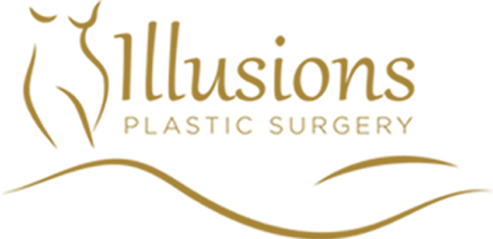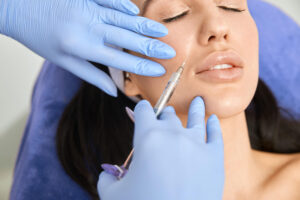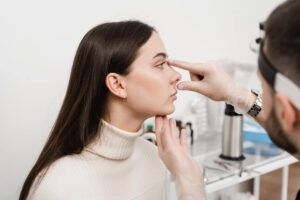Going through plastic surgery can feel like a fresh start. But what happens outside the operating room makes a big difference.
The postoperative recovery phase plays a huge role in your results. Knowing what your body needs—and when—helps the whole process feel more manageable and less stressful.
Here are some practical tips to support a smoother and more confident recovery journey.
What to expect after plastic surgery
Every recovery looks different depending on the type of procedure, age, and overall health. But most people experience swelling, mild to moderate pain, bruising, and fatigue during the first few days.
These symptoms usually ease over time. Watch for warning signs like excessive redness, fever, or unusual discharge, as they may require a call to your surgeon.
If you left the clinic with clear instructions in hand, you’re already on the right track with your postoperative recovery.
Read more:
👉 How to manage pain and swelling after cosmetic surgeries
Why the first 72 hours matter
The first 72 hours are a turning point. Your body begins responding to the surgical trauma and starts healing.
During this time:
- Avoid physical exertion
- Rest with your upper body elevated
- Wear compression garments consistently
- Take prescribed medications as directed
These habits can help reduce swelling and keep your postoperative recovery on the right path from the start.
How to manage pain without overmedicating
Discomfort is expected, but there are ways to ease it without relying only on medication. What usually works:
- Cold compresses for the first 48 hours
- Staying well hydrated
- Eating nutritious, easy-to-digest meals
- Light movement with approval from your doctor
Using pain relievers responsibly, along with these simple actions, supports a more balanced recovery.
Sleep position tips for faster healing
How you sleep matters more than most people think. Depending on your procedure, here’s what most surgeons recommend:
| Procedure type | Sleep position during early recovery |
|---|---|
| Tummy tuck | On your back, knees bent, torso slightly raised |
| Breast surgery | On your back, arms at your sides |
| Facial procedures | On your back, head slightly elevated |
Changing positions too early could slow down your postoperative recovery.
What to eat (and what to avoid) during postoperative recovery
Food supports healing. A few easy dietary shifts make a big difference:
Good to eat:
- Lean proteins (chicken breast, eggs, tofu)
- Citrus fruits (oranges, strawberries)
- Leafy greens (spinach, kale)
- Healthy fats (nuts, avocados)
Best to skip:
- Processed and packaged snacks
- Alcohol
- Excess sugar
- Fried foods
Nourishing your body helps it recover from the inside out.
How to handle drainage, bruising and swelling
Bruises, swelling, and drains are common. Here’s what usually helps during this phase:
- Wear compression garments every day
- Avoid sun exposure to surgical areas
- Book lymphatic drainage massages when approved
- Monitor drain output and appearance
These signs tend to fade within a few weeks, but staying observant helps you feel more in control of your postoperative recovery.
The importance of short walks and movement
Some people think full rest means no movement at all. But light activity—if your surgeon allows it—can reduce risks like blood clots and constipation.
A few gentle ways to stay active:
- Walk around the house a few times a day
- Stretch your legs while seated
- Wiggle your toes or shift your feet often
Simple actions can keep your circulation going and support steady recovery.
Read more:
👉 When to return to exercise after body contouring procedures?
When to shower and how to care for the incision
Showering after surgery requires caution. Most plastic surgeons in the U.S. recommend waiting 24 to 72 hours before your first gentle rinse, depending on your dressings and procedure.
Here’s what patients often do:
- Avoid spraying water directly on the incision
- Pat the area dry with a clean towel
- Skip baths and pools in the first weeks
- Use unscented, mild soaps
These habits help protect the incision site and reduce the chance of infection.
Why follow-up appointments matter for your postoperative recovery
Check-ins with your surgeon guide your recovery. These visits often include wound evaluations, stitch removal, and adjusting your care routine.
Missing follow-up appointments could lead to setbacks or missed signs of complications.
Staying on schedule keeps your postoperative recovery safer and more predictable.
Emotional ups and downs during the process
Healing isn’t just physical. Emotions often run high—especially during the first couple of weeks. It’s common to feel anxious, irritable, or unsure.
What many patients find helpful:
- Talking to someone you trust
- Tracking progress with weekly photos
- Reminding yourself that change takes time
This part of the process can feel overwhelming, but it often gets easier with support and perspective.
When to return to work and physical activit
Timelines vary depending on your surgery and lifestyle. But here are some general guidelines seen in most U.S. based plastic surgery recoveries:
| Activity | Estimated timeline |
|---|---|
| Desk jobs | 7 to 14 days |
| Light physical activity | After 4 weeks |
| High-impact workouts | After 6 to 8 weeks |
| Direct sun exposure | Avoid for at least 3 months |
Always check in with your surgeon before jumping back into regular routines.
Final checklist for a smooth postoperative recover
| Task | Why it matters | When to do it |
|---|---|---|
| Wear compression garments | Helps reduce swelling and support | As directed |
| Take medications properly | Controls pain and prevents issues | Starting Day 1 |
| Attend follow-up visits | Tracks your healing process | As scheduled |
| Sleep in proper position | Encourages pain-free recovery | Every night |
| Eat nutrient-rich foods | Supports tissue repair | Daily |
Ready to take the next step
Postoperative recovery works better with a solid plan. Have questions about your own recovery path? Want expert guidance tailored to your surgery?
Book a consultation at Illusions Plastic Surgery in West Palm Beach. Our team is here to help you feel informed, supported, and ready for your next step.







